A self-study, self-paced course where you can learn how to paint in watercolor by watching video lessons and doing assignments
$297 USD
ENROLL NOWA self-study, self-paced course where you can learn how to paint in watercolor by watching video lessons and doing assignments
$297 USD
ENROLL NOWOne-to-one, unlimited and custom-tailored to your skills and needs Personal Tutoring by the Watercolor Academy teachers
$997 USD
ENROLL NOWBy Ilya Ibryaev
It is a beautiful sunny day, and in this lesson, I will be painting a sandy Mediterranean beach. When painting on location, it is a good idea to stand in shadowed areas, to prevent direct sunrays from hitting an artwork or a palette. Here is the watercolor artwork that I will create in today's session.
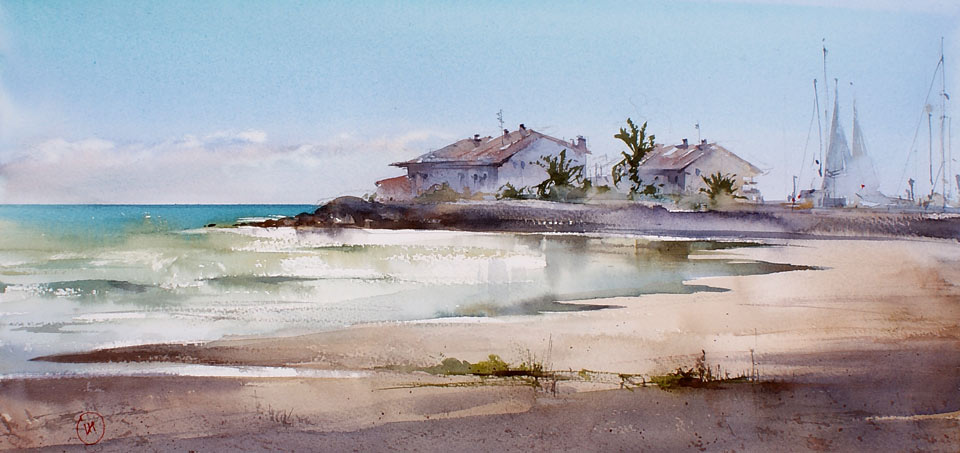
The sky is almost clear, with the Sun providing us with bright warm light. This composition is sketched from life, in graphite pencil, directly onto watercolor paper. I will start this painting by depicting the sky. To make its color, I mix Ultramarine with Cobalt turquoise to produce a color that is light blue and cold in appearance. For the first wash, I am using a round mop brush. The paint is applied onto paper with wide confident brushstrokes, and I dilute this wash with clean water to make a gradation, and to achieve a lighter tonal value closer to the horizon.
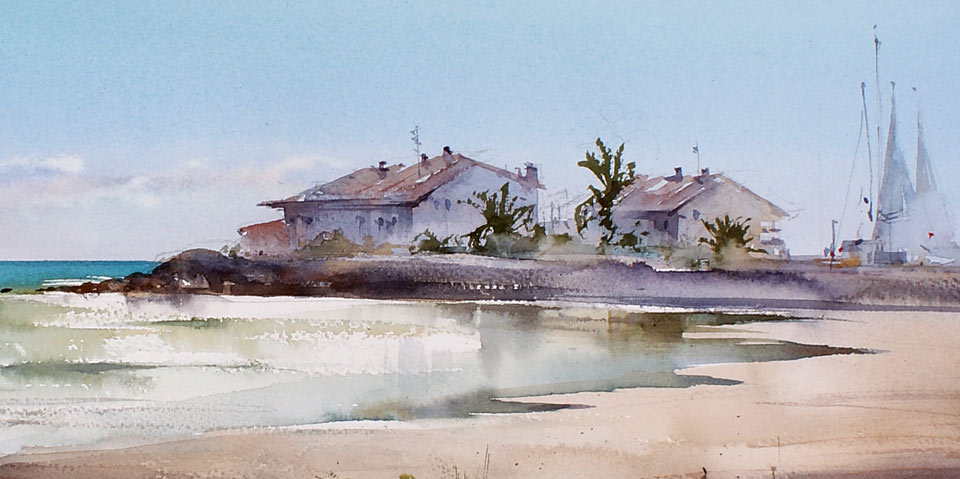
To increase the light and dark contrast of the sky, more paint is added at the top. The color of the sky gradates from Cobalt turquoise at the top, to a blue-violet color at the bottom. The excess paint can be absorbed with a semi-dry brush. In order to depict a few clouds just above to the horizon, I use a very light tint of Cadmium orange with Cadmium red. I do this with a smaller, round brush, which contains excess water. It is easier to control the wetness of the paint this way, which is very important, especially when painting on a vertically positioned board.
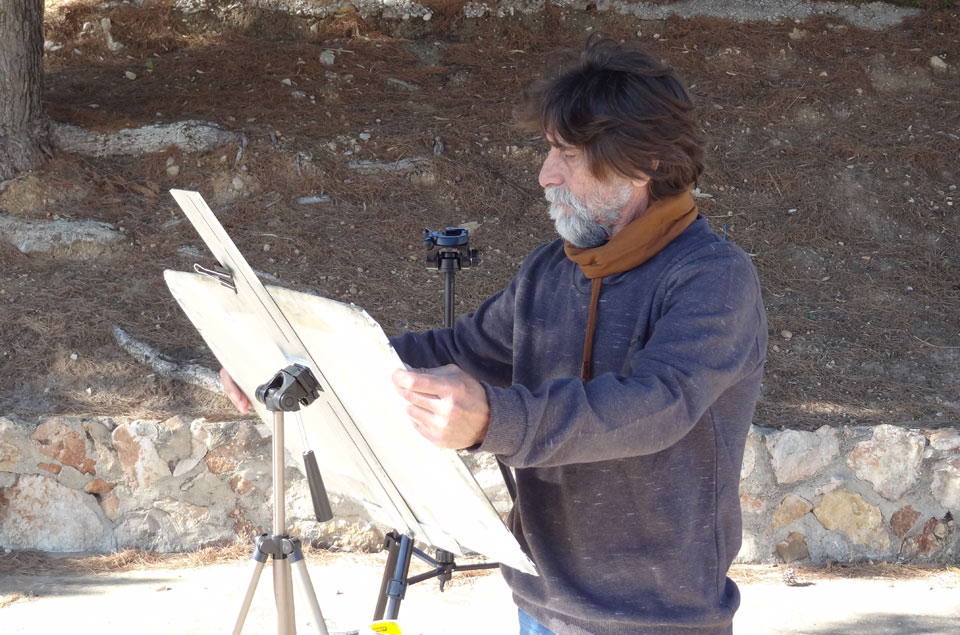
Usually, a seascape is painted in the following sequence: first the sky, then the sea, followed by the shore. However, it doesn't mean that we have to follow this sequence every single time. For example, I can now continue with the buildings on the background – for the terracotta roofs, I am using Cadmium orange, Cadmium red and a bit of Ultramarine. Blue paint is added because the roofs are in shadow, and their color is dark and cold.
The walls of buildings are also in shadow, and despite being white, they appear quite dark against the light sky. For the walls, I am using Ultramarine and Cadmium red. However, reflected light, which is bouncing from the ground to the walls, is warm. To depict this light, I use a mixture of yellow ochre light, Cadmium orange and Cadmium yellow. A small flat synthetic brush is a good tool to make rectangular brush strokes, and the small round brush is ideal for adding details. I would like to make an impressionistic artwork, and therefore small details are less important than colors and the contrast of tonal values. These buildings are standing next to the marina. On the right-hand side of this artwork, there are some sails and masts of yachts; they are also depicted very schematically, because they are on the background, and do not attract too much attention. I then paint the ground with a mix of Cadmium yellow and Cadmium orange. This warm bright mix is toned down with Ultramarine. Such a dark cold color makes an impression of shadows. For the middle ground, I am mixing Cadmium orange with Cadmium yellow and a little bit of Ultramarine. A very light tint is applied with wide brushstrokes. The brush is loaded with very little water, and I am painting on dry paper. I make the tonal values of the foreground darker; this is to create an illusion of aerial perspective, according to which, the objects closer to the viewer should have more saturated colors, higher contrast and darker values.
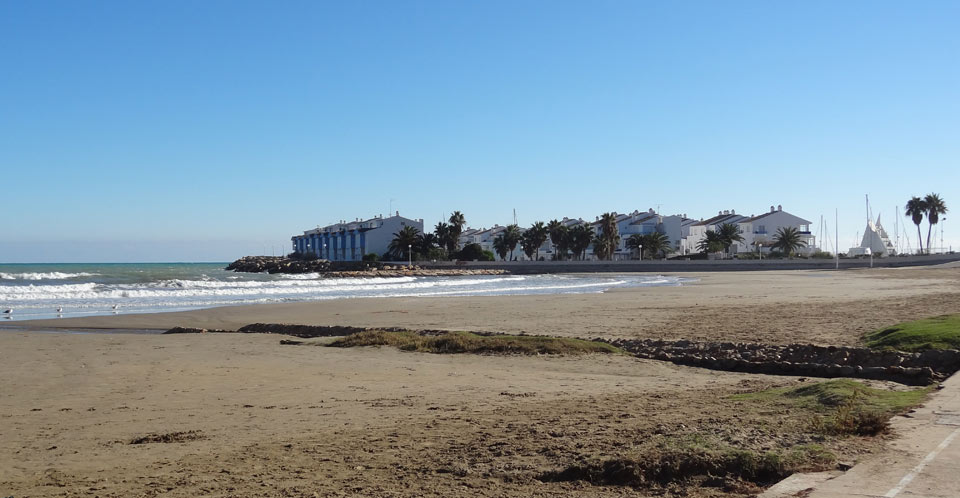
To increase the saturation, I am mixing yellow ochre light, Cadmium yellow and Cadmium red. This mix is applied on the background with a round mop brush. Also, I need a darker tone, and for this purpose, I am adding Cadmium orange and Ultramarine. A little bit more Cadmium red and Ultramarine are added into this wash. The paint flows downward and sinks into paper fibers, and its tone becomes lighter. I then let the paper dry a little bit, until it is moist. I can now paint the sandy beach texture with a mix of Ultramarine and Cadmium red. When the paper dries even more, I apply masking tape along the horizon, to protect the sky from the sea wash. For this wash I mix Ultramarine and Veridian pigments, and apply this paint with a medium-sized round brush next to the masking tape. Using masking tape is optional – if you can paint long, straight lines with a steady hand, it is better to avoid gluing tape onto already-painted paper.
To continue the variegated wash for the sea, I add yellow ochre light to the mix of Ultramarine and Veridian. I paint with a semi-dry brush on dry paper, and I leave white gaps between brushstrokes. This unpainted voids create an impression of white waves, unless I accidentally overpaint them with a bigger brush. If I make this mistake, in order to get the white waves back, I would have to wipe off the overpainted areas with a damp paper tissue. Painting in watercolor does not always go as intended – it is a challenging and very interesting medium to paint in. The pigments that I am using for the sea are Ultramarine, Veridian and yellow ochre light. For the darker waves, I am mixing Ultramarine, Veridian and Cadmium orange. These dark greenish waves are painted with swift brushstrokes. This time, I have to be more careful, and make sure that I leave some white gaps unpainted. I then mix Ultramarine and Cadmium orange to get a dark tone that I can use for painting water on the foreground. Yellow ochre makes this mix greener.
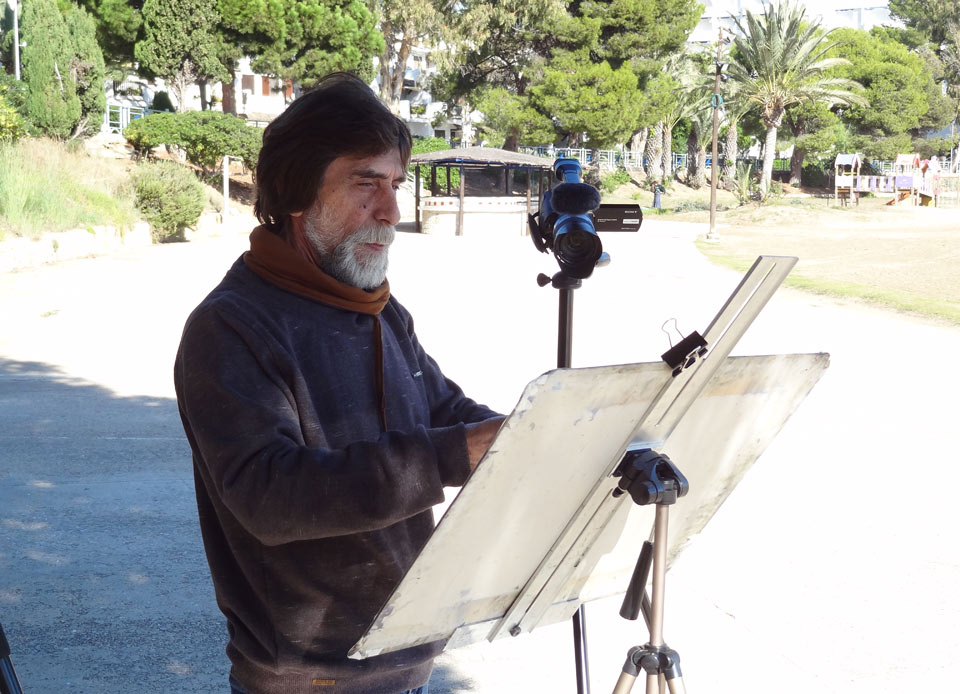
I am painting the sea using the wet-on-dry variegated wash method. In this method, different pigments are added into the wash next to each other, so that you can see green and blue colors in one wash. In our case, the sea is darker than the beach. That is why I painted the light sand first, and then continued with depicting the sea water. Water here reflects the dark background and buildings. It is time to take the masking tape off from the paper; this should be done carefully, otherwise you may damage the paper surface. Wet sand reflects the sky, and is darker than the rest of the beach. For this dark sand, I apply Ultramarine and Cadmium red, as well as adding Cadmium orange into the mix. I paint in loose wide brush strokes, adding clean water to allow the paint to run on the paper. To increase the tonal values, I add more Ultramarine, Cadmium orange and Cadmium red. This wash is painted wet-into-wet, allowing the pigments to flow and intermix with each other. I let this artwork dry, in order for the paper to become satin. Cadmium orange and Sap green are mixed on the palette. I use this mix to add the palm trees on the background. These palms are rather suggested than described...
A self-study, self-paced course where you can learn how to paint in watercolor by watching video lessons and doing assignments
One-time payment - Lifetime membership
$297 USD
One-to-one, unlimited and custom-tailored to your skills and needs Personal Tutoring by the Watercolor Academy teachers
One-time payment - Lifetime membership
$997 USD